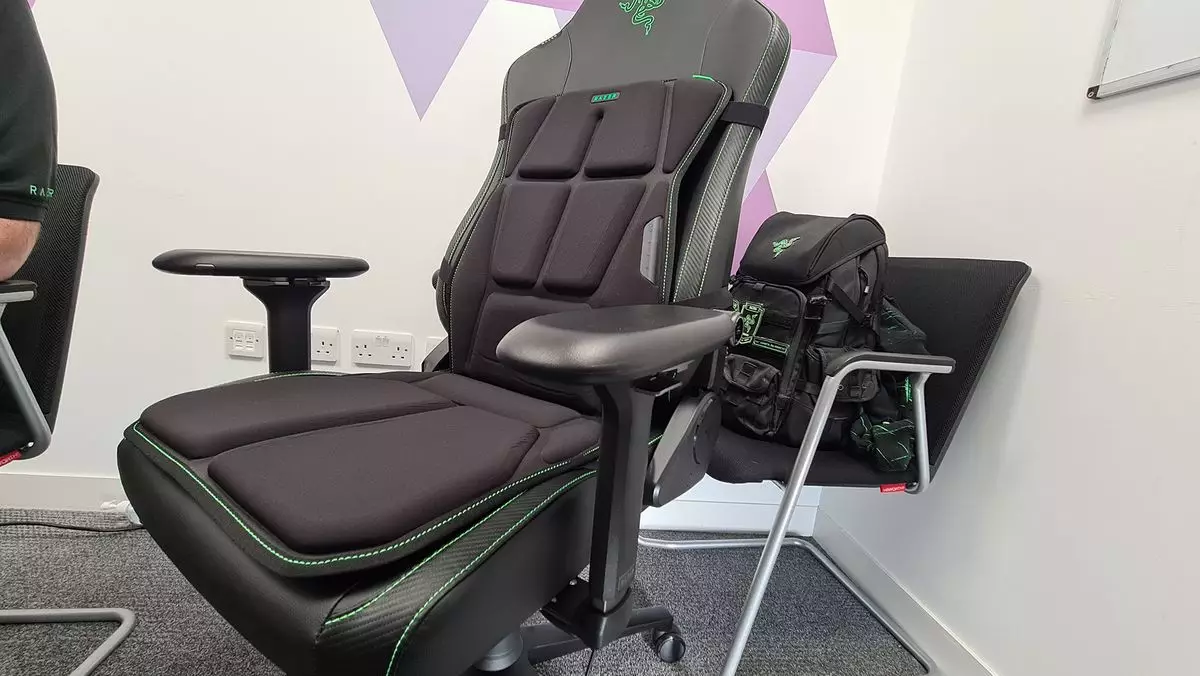Razer has once again ventured into the arena of innovative gaming accessories with the introduction of the Freya, a haptic gaming cushion that promises to deliver an immersive experience unlike any other. Its design is straightforward: you position the cushion on your existing gaming chair, connect it, and six discreetly embedded motors engage to create vibrations corresponding to in-game actions, music, or sounds. The concept of haptic feedback in gaming isn’t novel; various manufacturers have been incorporating similar technologies into vests, chairs, and other peripherals. However, Razer takes a unique approach by focusing explicitly on the cushion format. But does the Freya truly elevate the gaming experience, or is it merely another flashy gadget?
Setting up the Razer Freya is a seamless process, which likely appeals to both casual gamers and hardcore fans alike. The cushion attaches securely to almost any gaming chair through adjustable straps, ensuring stability during intense gaming sessions. This ease of use is a strong selling point, as many users demand products that integrate smoothly into their existing setups without convoluted installations. However, while it may be simple to install, the real question lies in how well it performs once the games begin.
During a pre-launch trial, I experienced the cushion firsthand in conjunction with a Razer gaming chair. The physical sensation of the device as the vibrations pulsed through the six zones was certainly noticeable, but the effectiveness of the immersion varied significantly depending on the game being played. Primarily tested with Final Fantasy XVI, the cushion delivered vibrations tied to in-game events—such as combat actions and magical spells—which initially felt engaging. However, the experience raised questions about its long-term appeal and the extent to which it can deliver consistent immersiveness across multiple gaming genres.
A standout feature of the Freya is its compatibility with titles that have been specifically optimized for haptic feedback. Games like Final Fantasy XVI and Hogwarts Legacy come equipped with native support, promising a more integrated experience. Razer is also eyeing the future, claiming that support for additional games will be facilitated by an Unreal Engine 5 plugin, which should streamline developer efforts to offer haptic experiences.
However, this reliance on developers to implement support casts a shadow of uncertainty over the product’s adoption. If your favorite games do not support the Freya natively, the cushion can still vibrate in response to general in-game sounds. Yet, this workaround underscores a central issue: how well can mere sound-driven haptics compete with action-specific feedback in creating an immersive play experience?
When set to maximum intensity, the Freya cushion provided an exhilarating yet overwhelming experience. Engaging in combat in Final Fantasy XVI produced a flurry of sensations across the pad, with distinct vibrations triggering during various gameplay actions. However, the sensations quickly blurred together as I became desensitized to the subtleties of the feedback after a prolonged period. The initial thrill of interaction became somewhat muted after extended use.
While the cushion may have potential in genres like racing simulations, where the feedback could play a crucial role in heightening the realism of driving experiences, its effectiveness outside those parameters remains questionable. I couldn’t shake the feeling that perhaps I wasn’t the perfect demographic for a product that seems tailored for a specific niche of gamers eager for the latest gimmick rather than an essential enhancement to gaming.
With a retail price set around $300, the Razer Freya must deliver consistently compelling haptic experiences to justify the investment. For some, particularly those who appreciate sim racing or the unique aspects of immersive gaming accessories, it could prove worthwhile. However, for the average gamer, the experience I encountered left me skeptical about my willingness to spend such a sum for sporadic enjoyment.
Even when experiencing music through the cushion, the impact felt akin to standing too close to a loud sound system—exciting but ultimately not pleasing. This leads to the broader question of market viability: can Razer effectively cultivate a user base ready to embrace this niche product, or will the Freya fade into the background as just another accessory without widespread relevance? Its success will depend on how well it can engage and delight gamers, and right now that seems a precarious perch for the innovative cushion.


Leave a Reply